SpaceX Tests 'Revolutionary' Dragon Launch Escape System to Save Astronauts
SpaceX launched a major test today of the innovative rocket escape system for its manned Dragon spaceships, a critical system designed to save astronauts in a launch emergency.
It was over in less than two minutes, with video of the Dragon crew capsule abort test showing the craft soaring skyward from a pad at Cape Canaveral Air Force Station in Florida today (May 6), then arcing out over the Atlantic Ocean and floating back to Earth under its parachutes. By all accounts, the test flight appears to have been a success.
"It was a great outcome," SpaceX founder and CEO Elon Musk told reporters in a post-launch teleconference. "The important thing is that if there had been people on board, they would have been in great shape." [See photos from the Dragon launch abort test]
The Dragon was expected to reach an altitude of nearly 5,000 feet (1,524 meters) under the power of its eight SuperDraco launch abort engines, which are built directly into the side of the capsule. "What SpaceX is doing is certainly unique," said Jon Cowart, NASA's commercial crew program manager, of the company's decision to mount its SuperDraco engines on the sides of Dragon. "It's definitely revolutionary in that regard."
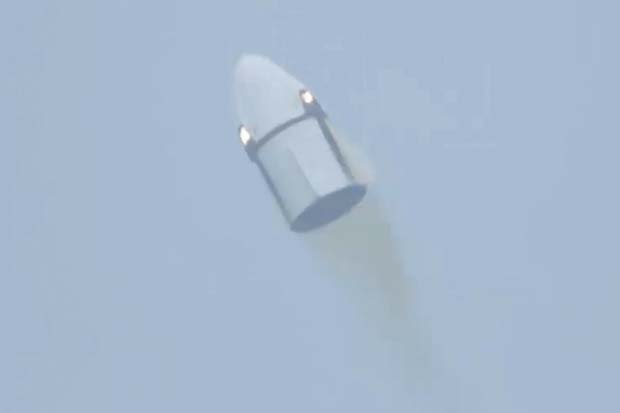
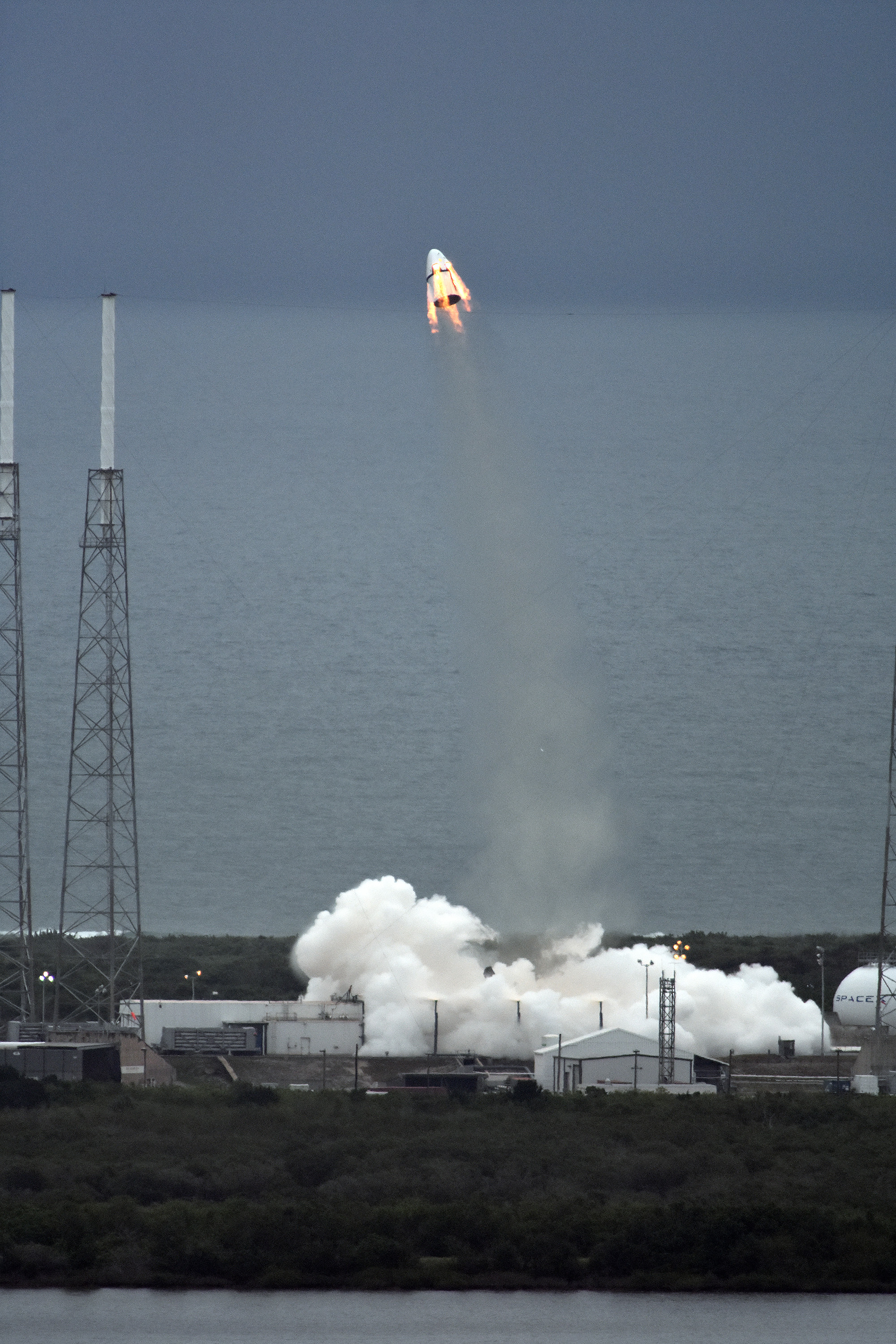
Nearly 270 sensors recorded data during the test flight, which blasted off at 9 a.m. EDT (1300 GMT). SpaceX placed a human-shaped dummy in one of Dragon's seven seats to measure how the abort test, which was expected to pull up to 4.5 Gs, would affect a real astronaut.
"It went from 0 to 100 mph in 1.2 seconds. So that's pretty zippy," Musk said of the test flight, which peaked at a max speed of 345 mph (555 km/h). The dummy appeared to have fared well during the brief flight, he added.
Get the Space.com Newsletter
Breaking space news, the latest updates on rocket launches, skywatching events and more!
SpaceX's launch abort system is an emergency escape measure designed to pull the crew capsule free of its Falcon 9 rocket in the event of a launch failure. NASA has tapped SpaceX's Dragon capsule as one of two private spacecraft to fly American astronauts by 2017, so that safety measure is vital. Boeing's CST-100 capsule is the other private space taxi picked by NASA.
"This flight [was] unlike any seen in Florida since the days of Apollo," NASA spokesman George Diller said after the launch.
NASA used launch abort systems on its Mercury and Apollo spacecraft in the 1960s and 70s, but used ejection seats on the Gemini capsules, as well as early space shuttle flights. Russia's Soyuz capsules have long used tower-mounted launch abort systems, and they successfully saved two cosmonauts during one rocket failure.
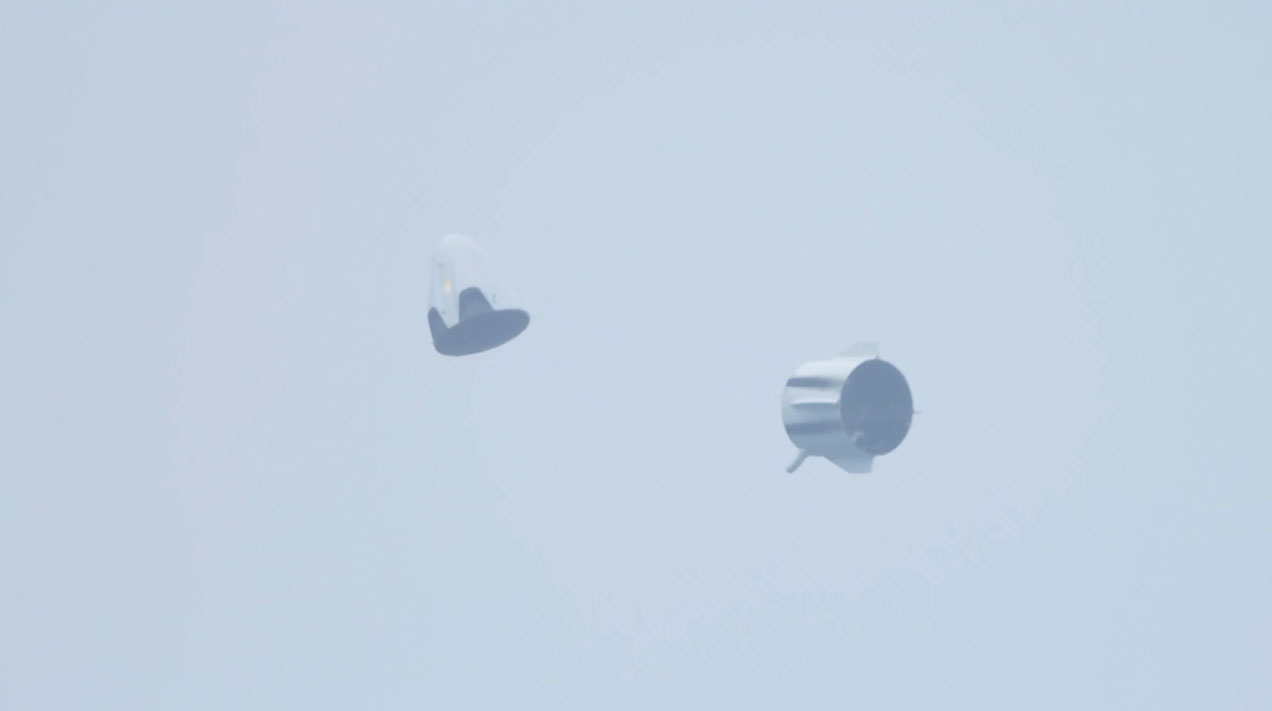
The revolutionary part of SpaceX's abort system is two-fold.
First, there is the side-mounted location of the SuperDracos. The launch escape systems used by NASA and Russia's Soyuz capsules are mounted on towers directly above the crew capsule. They are jettisoned before reaching orbit. SpaceX's SuperDracos, however, can be used all the way to orbit, offering increased safety, company representatives have said.
"The goal of human spaceflight was always human spaceflight. There was never any doubt," Hans Koenigsmann, SpaceX's vice president of Mission Assurance, said before the test. [How Spacecraft launch Abort Systems Work (Infographic)]
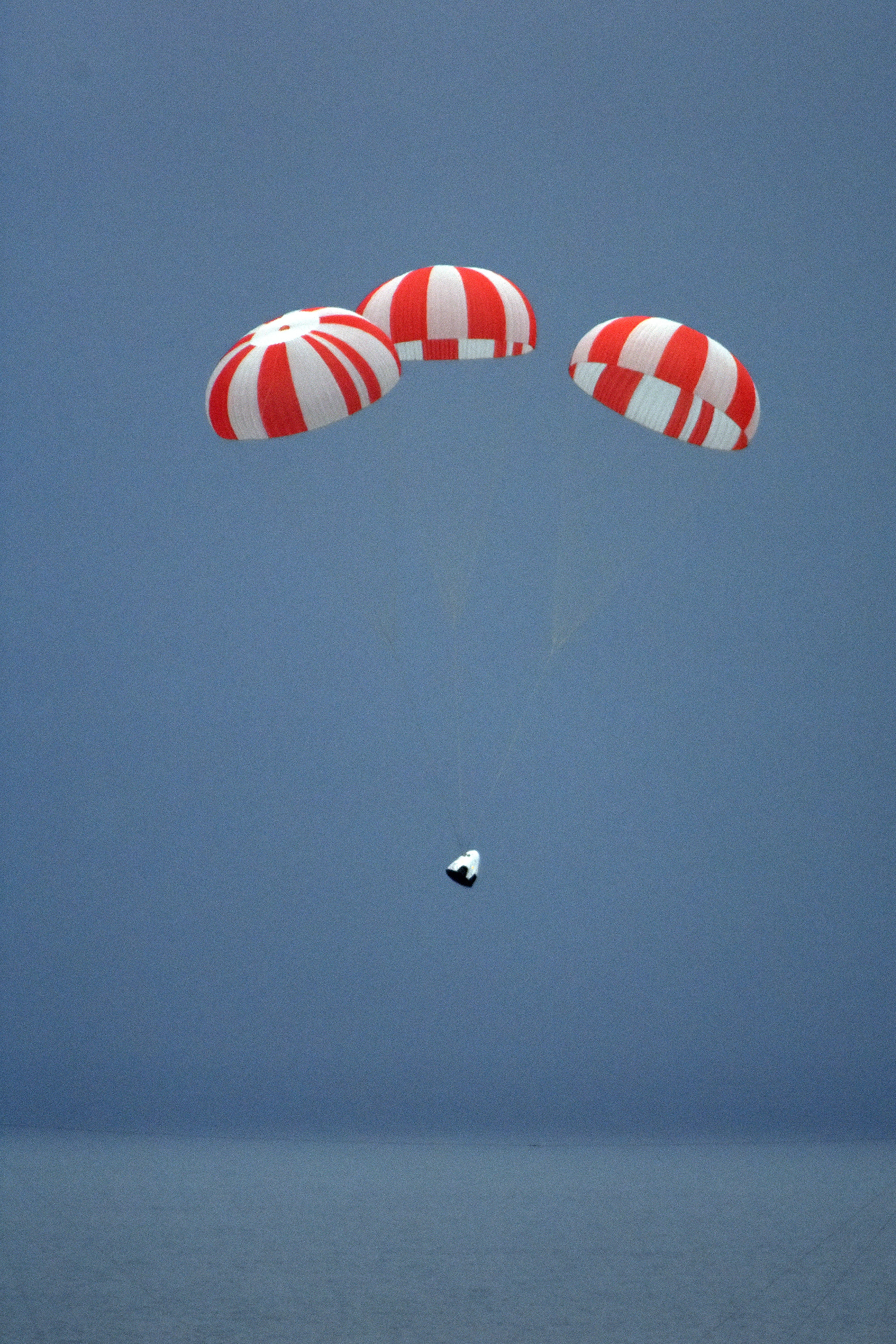
Koenigsmann described Dragon's SuperDraco design as "a more sophisticated, modern approach" to launch escape systems. "In my opinion, this will make it the safest vehicle that you can possibly fly."
In a second innovation, all of the SuperDraco engines are 3D-printed, and today's test marked the first time they fired in unison to catapult an 8-ton Dragon capsule off a launch pad. Each SuperDraco engine generates about 15,000 lbs. of thrust, with the entire system putting out 120,000 lbs. of thrust.
"It's got a lot of kick," Koenigsmann said.
And SpaceX engineers have designed the SuperDracos to serve as both launch abort engines, as well as descent engines. If a Dragon launched smoothly, the SuperDracos could then be used to make a land-based landing for eventual reuse. Musk has been pursuing reusability with SpaceX's Falcon 9 rockets and Dragon capsules in an effort to lower the cost of human spaceflight.
"I personally think this is the coolest looking spacecraft that you can see," Koenigsmann said.
During the test, eight SpaceX-built SuperDraco engines fired together for just 6 seconds, sending the spacecraft about 1.4 miles (2.2 kilometers) offshore into the Atlantic.
"Hang tight everyone!" a SpaceX flight director was heard to exclaim in a NASA broadcast as the Dragon floated down to its ocean splashdown.
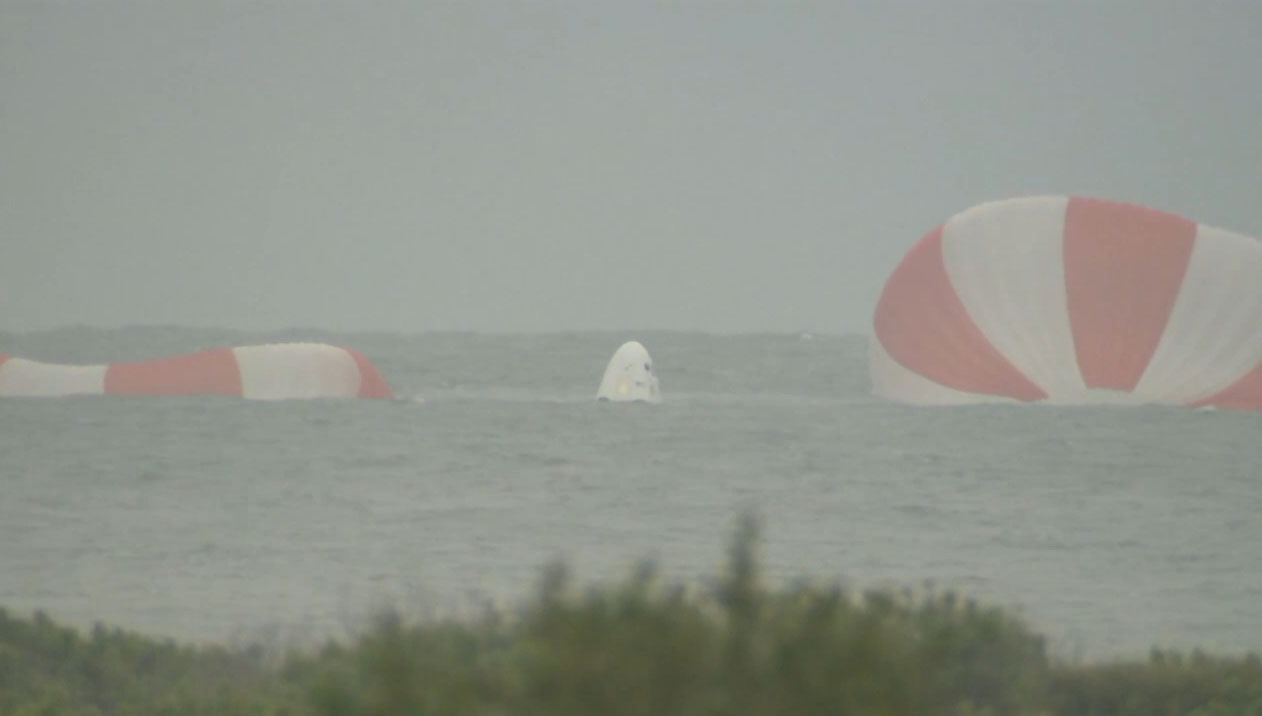
Three SpaceX recovery boats — two speedboats and one barge — were waiting nearby to retrieve the capsule. The Dragon crew capsule will ultimately be returned to SpaceX's testing site in MacGregor, Texas for more analysis.
"It does not have to be flawless for us to call it successful," Cowart said. "The point is to gather data. We can live with something that's not perfect."
One test flight, Cowart added, is worth 1,000 analyses.
SpaceX will follow up today's flight with a more complicated high-altitude test that will launch an unmanned Dragon crew capsule atop a Falcon 9 rocket, then test the launch abort system during the ascent. Another test flight will launch an unmanned Dragon crew capsule on a completely automated trip to the International Space Station and back.
"It's not clear which of those tests will precede the other," Musk said, adding that it will depend on the readiness of the vehicle. "We expect to accomplish both of those well within the next year and a half."
Last September, NASA awarded SpaceX $2.6 billion to complete its development work on the crewed Dragon capsule and aim to launch astronauts by 2017. Boeing received $4.2 billion to complete its own work on its CST-100 crew capsule.
Musk said the success of today's test flight bodes well for SpaceX's crewed Dragon program.
"Hopefully within two years we'll be transporting crew to the space station," Musk said. "We're just really looking forward to it, and it's going to be super-exciting."
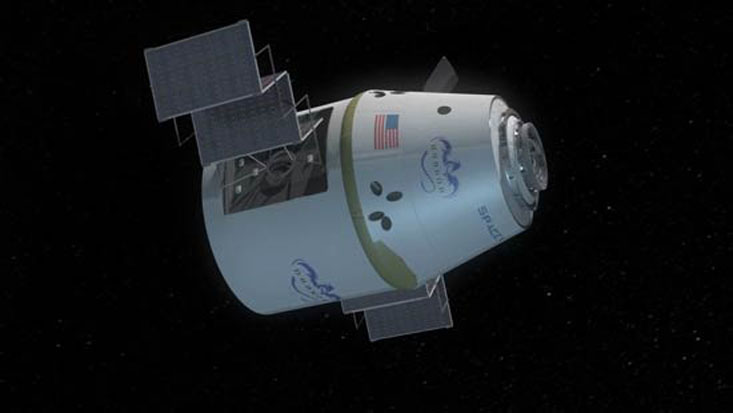
Meanwhile, officials with SpaceX and NASA officials plan to pore over the data collected during today's flight. Cowart, for one, was excited to see what it might reveal.
"These are the kinds of things in rocketry that we live for," he said. "These are the days we live for in this business."
Editor's note: This story was updated at 12:29 p.m. ET to include comments by SpaceX CEO Elon Musk on the Dragon pad abort test's success.
Email Tariq Malik at tmalik@space.com or follow him @tariqjmalik and Google+. Follow us @Spacedotcom, Facebook and Google+. Original article on Space.com.
Join our Space Forums to keep talking space on the latest missions, night sky and more! And if you have a news tip, correction or comment, let us know at: community@space.com.

Tariq is the Editor-in-Chief of Space.com and joined the team in 2001, first as an intern and staff writer, and later as an editor. He covers human spaceflight, exploration and space science, as well as skywatching and entertainment. He became Space.com's Managing Editor in 2009 and Editor-in-Chief in 2019. Before joining Space.com, Tariq was a staff reporter for The Los Angeles Times covering education and city beats in La Habra, Fullerton and Huntington Beach. In October 2022, Tariq received the Harry Kolcum Award for excellence in space reporting from the National Space Club Florida Committee. He is also an Eagle Scout (yes, he has the Space Exploration merit badge) and went to Space Camp four times as a kid and a fifth time as an adult. He has journalism degrees from the University of Southern California and New York University. You can find Tariq at Space.com and as the co-host to the This Week In Space podcast with space historian Rod Pyle on the TWiT network. To see his latest project, you can follow Tariq on Twitter @tariqjmalik.









